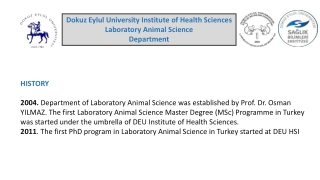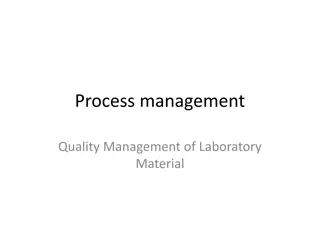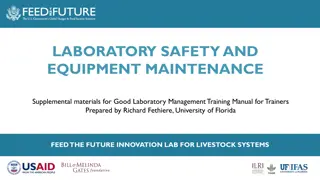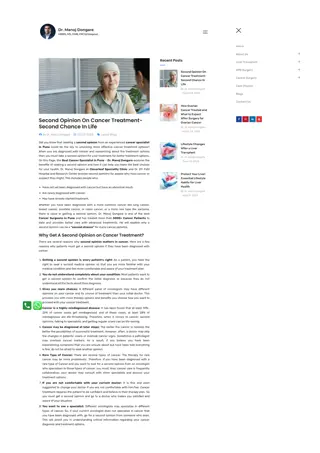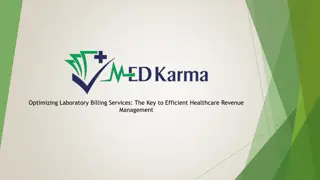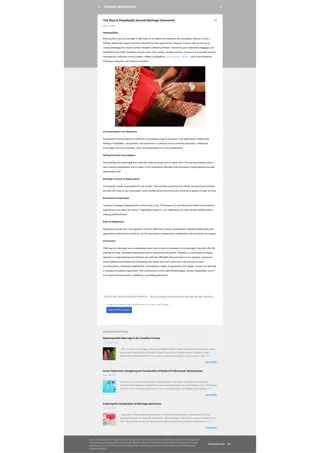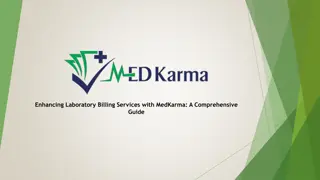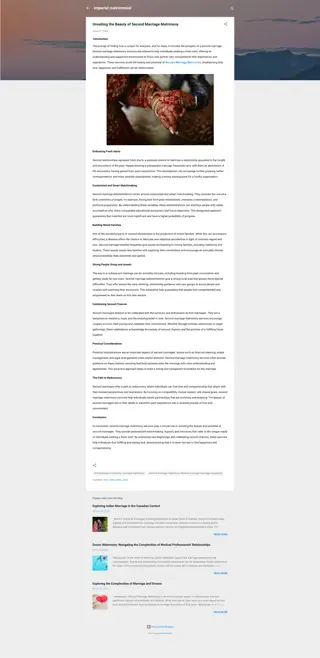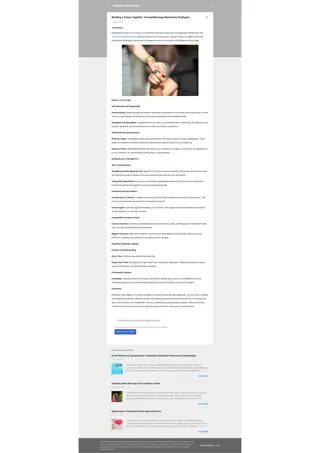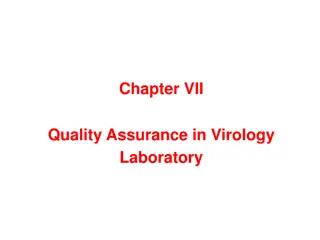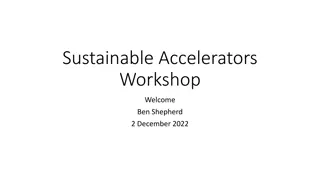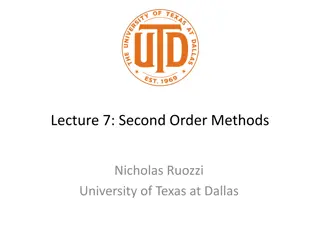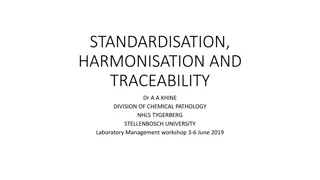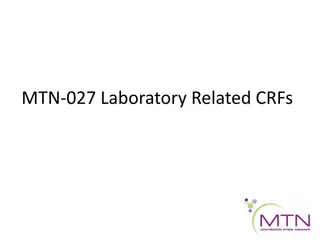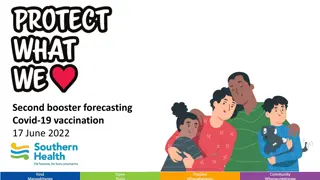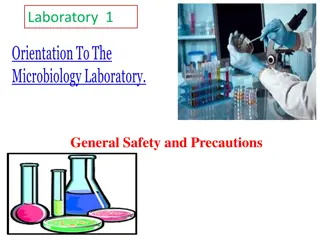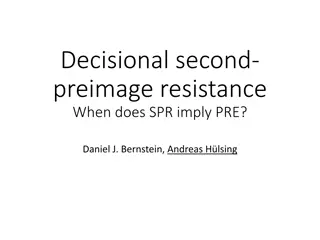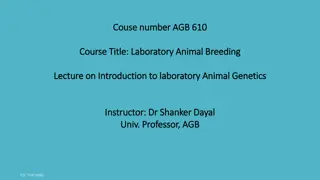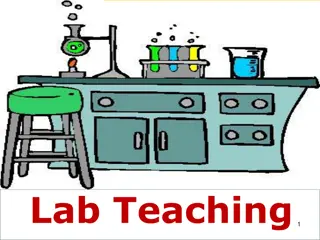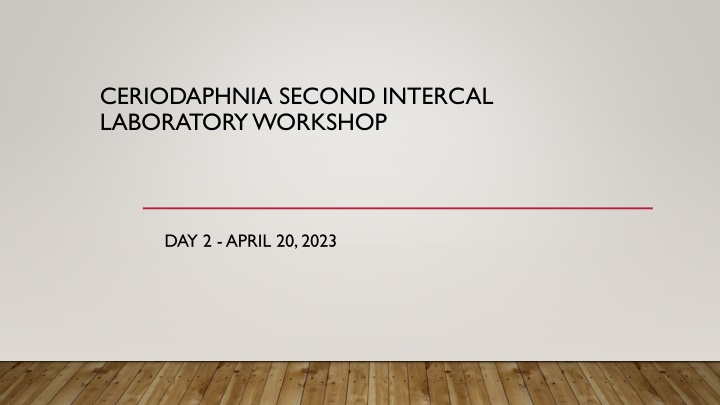
CERIODAPHNIA SECOND INTERCAL LABORATORY WORKSHOP
Embrace the essence of scientific discovery at the Ceriodaphnia workshop. Dive deep into practical experiments, analyses, and discussions to enhance your expertise in the realm of biology. Join us on April 20, 2023, for an enriching learning experience that will broaden your horizons and sharpen your skills in a collaborative environment.
Download Presentation

Please find below an Image/Link to download the presentation.
The content on the website is provided AS IS for your information and personal use only. It may not be sold, licensed, or shared on other websites without obtaining consent from the author. If you encounter any issues during the download, it is possible that the publisher has removed the file from their server.
You are allowed to download the files provided on this website for personal or commercial use, subject to the condition that they are used lawfully. All files are the property of their respective owners.
The content on the website is provided AS IS for your information and personal use only. It may not be sold, licensed, or shared on other websites without obtaining consent from the author.
E N D
Presentation Transcript
CERIODAPHNIA SECOND INTERCAL LABORATORY WORKSHOP DAY 2 -APRIL 20, 2023
TODAYS GOALS QAPP Contains all Procedures for the Second ILS Today s Two Main Goals: Overview of Procedures Details on Standardized Procedures that Differ from the Baseline ILS Billing for the second ILS An Opportunity for You to Ask Questions
AGENDA Food and feeding documentation Water system documentation Data submission Billing for 2ndIntercal Review of yesterday s topics for those unable to attend
FOOD AND FEEDING Need to independently quantify density of YCT and algae Let us know if you need help with quantification methods Use datasheet provided and send to SCCWRP following each round
FOOD AND FEEDING DOCUMENTATION YCT Made inhouse or purchased (supplier) If made inhouse: recipe Date of production Total solids in stock How YCT is added (directly or mixed with test solution) Volume added Volume of test solution
FOOD AND FEEDING DOCUMENTATION Algae Made inhouse or purchased (supplier) Date of production Concentration of cells in stock How algae is added (directly or mixed with test solution) Volume added If algae and YCT are added directly, are they added separately or mixed Questions????
WATER TREATMENT DOCUMENTATION Excel spreadsheet checklist Check boxes to indicate which treatments and in what order If there is anything not included, add it as a note below the list Questions????
DATA SUBMISSION Very little has changed since the Baseline New code for brood boards New field for tracking broods during test
DATA SUBMISSION PROCESS Link for data portal will be sent Portal has latest data template Instructions for each field in QAPP Appendix H Check data through portal Once all errors are fixed submit data through portal
NEW RESULTS FIELD--BROODGROUP Comments EndPoint Repro Repro Repro Repro Repro Repro Repro Repro Survival Survival Survival Survival Survival Survival Survival Survival LabRep Day Time Result ResultUnits 0Count 0Count 3Count 0Count 2Count 3Count 12Count 15Count 1Count 1Count 1Count 1Count 1Count 1Count 1Count 1Count BroodGroup 1 1 1 1 1 1 1 1 1 1 1 1 1 1 1 1 1 2 3 4 5 6 7 8 1 2 3 4 5 6 7 8 9:00 9:00 9:00 9:00 9:00 9:00 9:00 9:00 9:00 9:00 9:00 9:00 9:00 9:00 9:00 9:00 0 0 1 0 2 2Part of previous day s brood 3 4 -88 -88 -88 -88 -88 -88 -88 -88 Data Submittal Questions???
BILLING We will process invoices after datasets have been submitted PO number will be issued by Bryan Nece (SCCWRP) Use SCCWRP PO number on your final invoice(s) Send invoices to Bryan (bryann@sccwrp.org)
QUESTIONS FROM WHAT WAS COVERED TODAY
AGENDA Highlights of testing procedures Guidance for brood board health documentation Guidance for split brood determination and documentation Guidance for randomization of test boards
WHAT HAS NOT CHANGED Monitoring of brood board quality Water quality measurement on brood boards Use of 24 hr old neonates produced within an 8 hr window Same samples will be tested with same naming convention Each test treated independently for blocking by known parentage except tests with 2A and 2B-F Same number of controls One for each sample type, therefore 4 per lab per testing round
WHAT HAS NOT CHANGED-CONTINUED Eight-day test duration Renew or terminate test boards at 24 hours 1 hour from initiation Same level of test water quality analysis Same sample distribution and holding time requirements Please return ice chests and cold packs
NEW OR ADJUSTED PROCEDURES Age of adults used to start tests will be 6-10 days old Record which brood number neonates came from Independently quantify algae and YCT densities Holding time after thawing 7 days for YCT; 21 days for algae One new code for brood board monitoring Test boards must be randomized Document split broods on bench sheets
NEW OR ADJUSTED PROCEDURES-CONTINUED All reagents for water production stored in desiccator at least 1 week before use Send us how you would have designated broods and when test would have ended No water samples sent to SCCWRP for chemical analysis Archive at least 100 ml of laboratory dilution water from each round QUESTIONS???
Brood Board Monitoring Parameters With Descriptions Health Code Parameter Description of Parameter A Unhealthy adult Lack of normal movement, not normal shape, smaller than normal, or atypical coloration. Presence of ephippia in brood pouch. Empty brood pouch, lack of clear gutline, and undersized brood based on age (i.e. only 3-6 eggs present 5 or more day post initiation). Self-explanatory. D Dead adult K All OK Nothing in any of the other categories to report. M Male An animal that produces no young and is microscopically examined to determine sex. Triangular abdomen and fast/irregular swimming. N Dead neonates Self-explanatory. Can be some or all of brood. U Unhealthy neonates Lack of normal movement, not normal shape, ephippia or atypical coloration. O Other occurrences Growth on adults or neonates, biofilm in brood cups, foreign species, aborted broods, flocculent material, etc. Describe in comments section. Y Neonates used to initiate a test Neonates from this brood board chamber were used to initiate a test. More than one code may apply, and all should be recorded.
CERIODAPHNIA DUBIA SPLIT BROOD GUIDANCE
SPLIT BROOD IDENTIFICATION Must be part of daily checks If small brood occurs, check female for unreleased neonates On day following small brood check size of neonates compared to other replicates in same treatment Document split brood observations on bench sheets May have senior staff verify split broods No split broods without documentation
EXAMPLE OF THREE BROODS: SPLIT BROODS Test ID: Date and Time of Start, Renewal, termination No ______ Adults/ day Food Added Test Day A B C D E F G H I J Initials 1:30 pm 2/13/21 Treat- ment _____ _ _____ _____ _____ ___ 0 (0h) Verify randomization____ Blocking by Parentage _____ 10 Y ABC 2:15 pm 2/14/21 1 (24h) 0 0 0 0 0 0 0 0 0 0 10 Y ABC 1:49 pm 2/15/21 2 (48h) 0 0 0 0 0 0 0 0 0 0 10 Y ABC 12:30 pm 2/16/21 3 (72h) 0 0 0 0 0 0 0 0 0 0 10 Y ABC 2:00 pm 2/17/21 4 (96h) 4 5 5 3 3 4 2 1 4 5 10 Y ABC 2:30 pm 2/18/21 5 (120h) 0 4 0 0 0 3 2 0 0 0 10 Y ABC 2:00 pm 2/19/21 6 (144h) 9 3 9 9 10 5 9 7 8 8 10 Y ABC 1:30 pm 2/19/21 7 (168h) 12 10 15 12 19 13 11 10 9 12 10 Y ABC Total Young/Rep 25 22 29 24 23 25 24 18 21 25 Mean per surviving female (TAC) 23.6 Adult Survival: 100% Note: split Mean young per original female 23.6 brood
CERIODAPHNIA DUBIA TEST RANDOMIZATION GUIDANCE
Randomization of test is required How randomization is done is not being dictated The following are two examples

